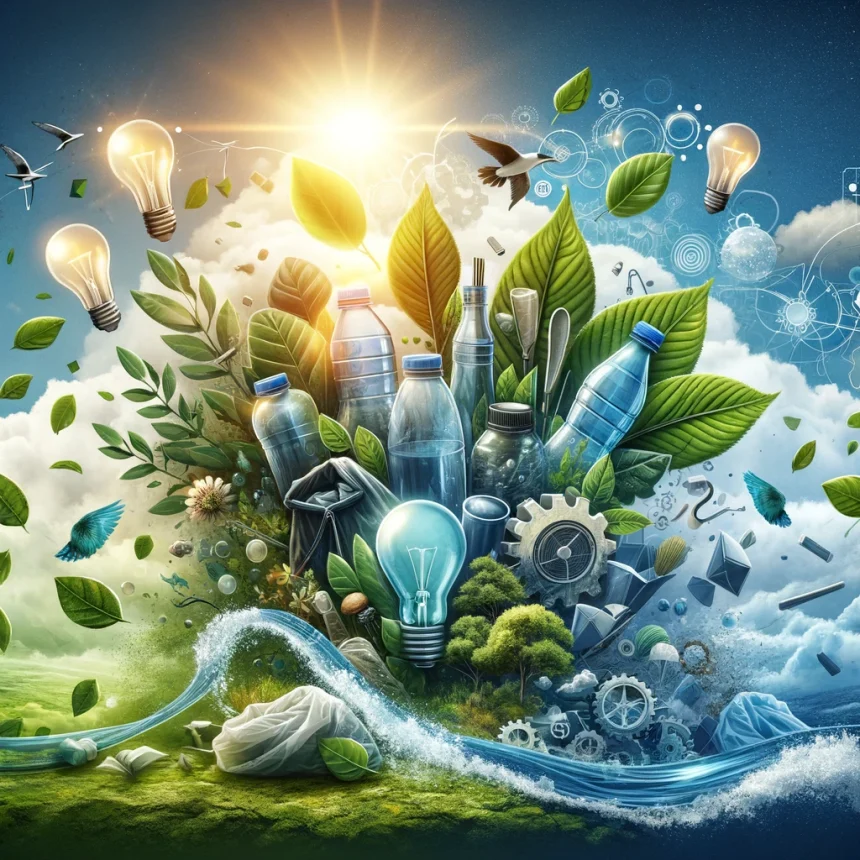Navigating the intricate maze of contemporary ecological quandaries, the enigma of plastic emerges with stark prominence. Its dual nature – as an indispensable ally in modern existence and simultaneously a formidable adversary to global ecosystems – beckons a radical renaissance. Behold the dawn of an inventive paradigm, where biodegradable plastics herald a symbiosis between human ingenuity and the sanctity of environmental conservation.
The Genesis of Innovation
At the crux of this audacious endeavor lies a transformative technology, a re-envisioning of plastic’s essence, bestowing upon it the ability to dissolve harmlessly back into the earth’s bosom. This narrative isn’t a mere continuation of material science; rather, it’s a quantum leap towards an era where plastic’s existence is in harmonious accord with the Earth’s organic lifecycle, disintegrating with the elegance of autumnal foliage.
The Alchemy of Transformation
This cutting-edge technology employs sophisticated biopolymers, designed for swift disintegration under a gamut of environmental conditions. Contrasting sharply with conventional bioplastics, which are dependent on industrial composting for decomposition, these novel entities are crafted to perish in diverse settings, including the humble confines of home composts and the vast expanses of aquatic realms, broadening the horizons for conscientious discard.
The Harbingers of Disintegration
Integral to this innovation are the enzymes, embedded within, serving as the harbingers of decomposition. These biological catalysts are intricately designed to lie in wait, inert during the product’s lifespan, only to awaken when beckoned by the right amalgam of environmental cues – be it specific thermal, moisture, or microbial conditions. This meticulous orchestration of the decomposition narrative heralds a new epoch in material engineering, ensuring product stability during utility and facilitating seamless reintegration into nature thereafter.
The Spectrum of Sustainability
The ripple effects of this groundbreaking innovation transcend the mere abatement of waste. By embracing raw materials birthed from the womb of renewable resources, such as the remnants of agriculture or the fibers of non-edible flora, this methodology aligns seamlessly with the broader sustainability crusade, curtailing the dependence on petrochemical derivatives and diminishing the carbon shadow cast by plastic fabrication.
The Vision of a Circular Economy
The advent of authentically sustainable biodegradable plastics is a clarion call to the envisioned circular economy, a realm where every product’s demise is preordained in its creation. This paradigm not only confronts the specter of plastic accumulation but also fosters a culture of mindful consumption, where the material journey from cradle to grave becomes a pivotal criterion in product design and selection.
Navigating the Obstacles: From Conception to Realization
Yet, the path from the alchemical labs to the realms of mass production is fraught with formidable barriers. It demands not just the refinement of technology and the infusion of capital but also a seismic shift in the manufacturing ethos and the intricate web of supply chains. Equally daunting is the task of reshaping societal perceptions, and cultivating an appreciation for the environmental dividends of these avant-garde materials.
The Confluence of Policy and Synergy
The metamorphosis towards a sustainable biodegradable plastics paradigm is a journey of collaboration, a symphony that requires the confluence of diverse sectors. Legislators, industrial mavens, and eco-crusaders must unite in solidarity to foster an ecosystem where these innovations can flourish. A tapestry of incentives for green manufacturing, coupled with rigorous mandates on traditional plastics, could catalyze the embrace of biodegradable alternatives.
Epilogue: Envisioning the Horizon
The narrative of biodegradable plastic innovation is more than a tale of technological triumph; it embodies a vision of equilibrium between human convenience and the sanctity of our natural world. As this technology evolves and permeates, it has the potential to redefine our material reality, steering us away from the precipice of plastic perdition. The voyage is intricate and laden with challenges, yet the compass points unwaveringly toward a sustainable, plastic-free horizon. In this odyssey, every stride, every breakthrough, every concerted effort towards ecological harmony, etches the path towards a verdant future.








